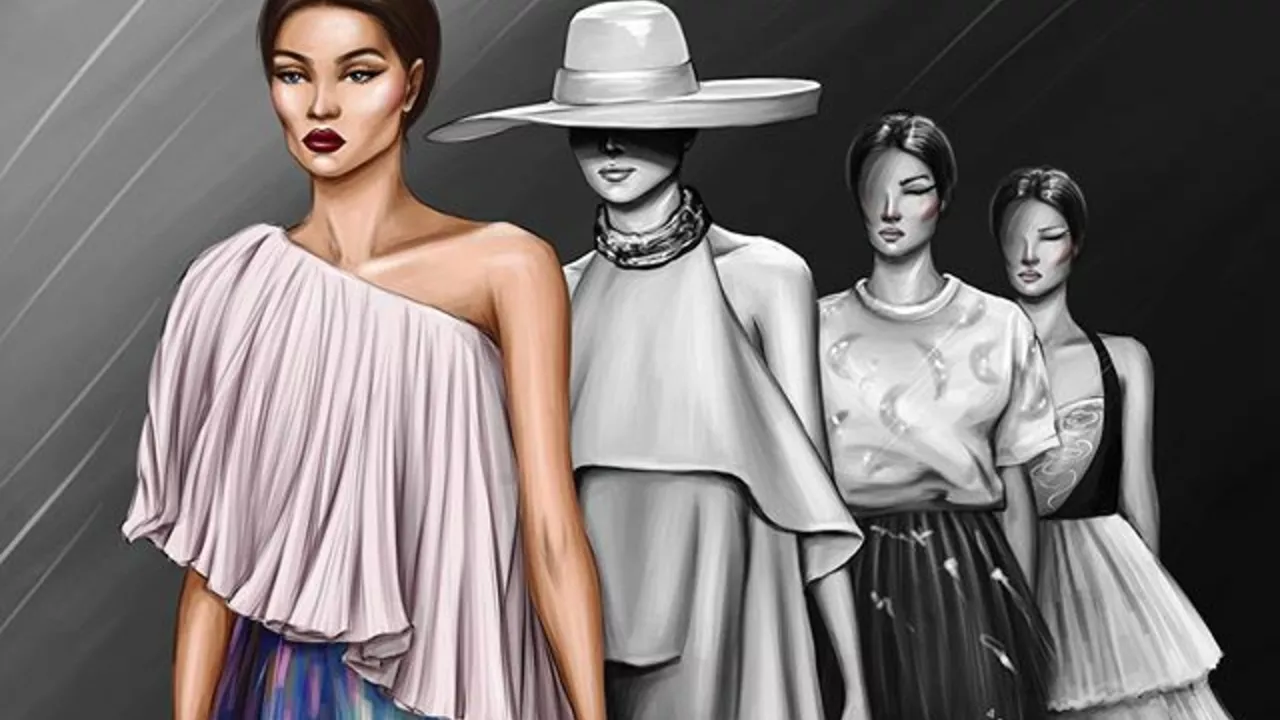Introduction to Fashion Illustration and Rendering
Alright, here’s the score: I am the type of guy, who knew nothing substantial about fashion illustration and rendering until my wife Serena (the fashion connoisseur of our household), introduced me to this fascinating world. In the past few years, I've come to realize that fashion illustration and rendering isn’t just about simply representing clothes on a piece of paper. It's a form of expression, it's a communication medium, it's an art that brings designs to life. Whether you’re like the past me, who couldn’t tell a boot from a brogue, or a budding fashion designer looking to enhance your skillset, getting to know more about this craft can surely come in handy.
So buckle up, fellas, because we're about to unpack the world of fashion illustration-from the basics to drawing apparel, and even understanding the significance of its role in the communication of design ideas. Just remember, we're not just learning something new, we're stepping into a fascinating realm where creativity meets practicality!
Delving into the Fundamentals
Ever watched a young child doodle on a piece of paper? Well, fashion illustration is kind of like that, only a bit more advanced and targeted. It's an art that revolves around the representation of garments and the human form. Starting with the basics is necessary, just like when we first learned to tie our shoes or ride a bike. Simple figures, basic lines and learning the proportions can go a long way in getting you started on this journey. Remember, it's not all about being perfect from the get-go. Just like cooking a new recipe, it's all about measuring the right ingredients and following the process till you master that dish (or in this case, the art of illustration).
Rudimentary fashion templates, also known as croquis, could be the turning point for you. These are basically blank templates of models in various poses that you can draw clothes on. It's like using the doodle toys we had as kids, but now, it's for serious business. Using croquis, you can focus on creating your garment designs without worrying about drawing the human figure from scratch every time.
Understanding Drawing Apparel for Design Communication
Remember the first time when we ordered a custom-made outfit and failed terribly to explain to the tailor our dream design? Well, after diving into fashion illustration and rendering, you'll feel like you’ve been handed over the secret recipe to communicate your ideas. Being able to effectively put your fashion vision onto paper, transforms it from just an idea to something tangible, something real. This, my friends, is the essence of drawing apparel for design communication.
When it comes to drawing apparel, you need to know that there's so much more to it than just sketching a pretty dress or a cool pair of jeans. You'd be looking into fabrics, silhouettes, draping, texture, color schemes, and a whole lot that goes into the actual garment design. The ability to accurately depict these elements in your illustrations can communicate your vision more distinctly, making it easier for manufacturers, clients, and other designers to understand your idea better.
Mastering the Art of Rendering in Fashion Illustration
Suddenly, memories flood back to the time when Serena was preparing for her final fashion design project at university. Half of my living room was filled with her fabric swatches, pencils, and paper as she tried to render her designs for her collection - and I could hardly understand what it was all about! It's safe to say, I’ve come a long way since then and today, I want to share with you just what rendering in fashion illustration means and why it's essential.
Rendering is the process of making your fashion illustrations look realistic and three-dimensional through shading, adding texture, and working with different coloring methods. It's like adding life to your sketches, making them look more than just flat, two-dimensional images. The different styles, techniques, and mediums like watercolors, markers, colored pencils, or even digitally, can make your designs pop and give them a distinctive aesthetic.
Infusing your Personality into the Drawings and Designs
Just as we have our own unique style of handwriting, every designer tends to develop their own distinctive style of fashion illustrations with time. Trust me, from personal experience, I can assure you it's absolutely exhilarating when you finally see your personality reflected in your illustrations. Just remember, there’s no right or wrong, and there's no one-size-fits-all in fashion illustration. It’s all about experimenting, discovering, and embracing your style.
So, whether you're a fan of the minimalist technique or love detailed, intricate illustrations - know that it's all valid. You can create a signature style that is uniquely yours. Take Chanel's black and white sketches or Jean Paul Gaultier's humorous illustrations; they all have a personal touch making them iconic. Be adventurous with your designs, play with colors, experiment with new techniques, because that's how you will find your own, distinctive fashion illustration voice.
Let's not forget, fashion illustration is not only a skill but also a passion. It's a wonderful world where art and fashion intertwine. Remember to enjoy every step, experiment along the way and keep learning. As I previously mentioned, there's more to fashion illustration than meets the eye and with the right knowledge and skillset, anyone can master it.

